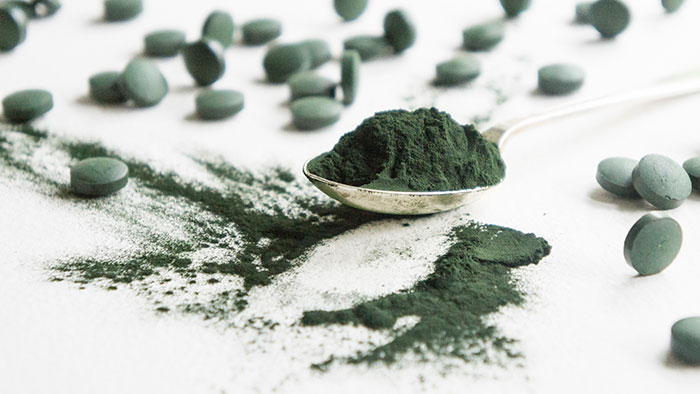
Pronounce it: spih-ruh-leenah
Spirulina is a freshwater algae or seaweed that grows naturally in tropical and sub-tropical lakes. Historically used as a food by native South American people, it fell into disuse for many centuries until recognised as a non-animal protein source in the 1970s. It is dried and made into cakes for use in soups and stews around the shores of Lake Chad, West Africa.
Because it is a supplement rather than a mainstream food, spirulina has not been as widely or deeply researched as major food stuffs. It offers the full spectrum of amino acids (proteins) but is not considered to be as complete in other nutrition as milk, eggs or meat. It could be of great use where protein is rare but not as useful in the Western world, where availability of plant-based protein is not an issue.
Vegetarians regarding spirulina as a major protein source will miss out on nutrients unless also including eggs and milk in their diet or by still relying on the correct balance of grain and pulses they eat. It could be more useful to vegans but they should seek professional advice about their overall diet and might need to supplement, for example, vitamin B12.
Either way, spirulina is many, many times more expensive (up to 30 times it has been said) than other protein sources and thus its contribution as anything more than occasional has not been established. It is used as a supplement in poultry and fish farming and has been recommended as a protein source that could be grown and harvested during extended space travel.
There are currently no industry agreed systems that will guarantee spirulina crops are not contaminated by other organisms or types of water-based weeds.
Availability
Marketed as powders, tablets, capsules and flakes.
Choose the best
There does not appear to be much difference nutritionally between any of the forms available, so make a choice according to how you want to use it or on price. There are variations in taste only discovered through experience. Taste and cost are probably the major hurdles to leap before including spirulina in your diet and probably explains why spirulina is not on everybody’s shopping list.
Store it
Follow packet instructions carefully.
Cook it
Spirulina can be used in stocks and soups but is more usually added to juices and smoothies.
Some find the taste and colour off-putting so you can get around this by taking capsules.
Be the first to comment on "Spirulina"